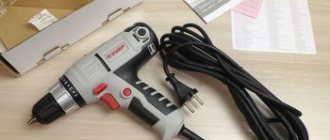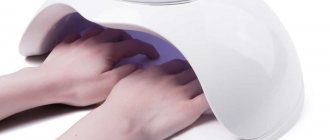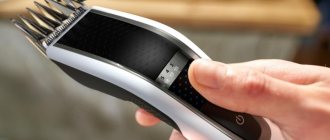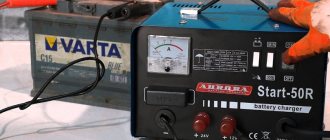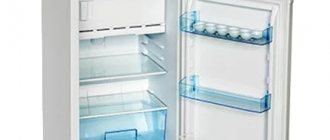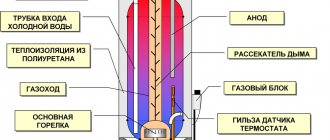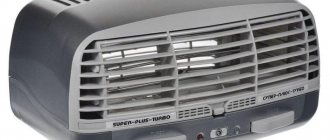Types of batteries for screwdrivers
The diversity of rechargeable batteries is due to the fact that various chemical elements can be used as electrodes and electrolytes. The quality of operation of the power tool used depends on the correct choice of energy storage device. The following 4 types are most widespread in the field of electrical appliances:
- nickel-cadmium (Ni-Cd);
- nickel metal hydride (Ni-MH);
- lithium-ion (Li-Ion);
- lithium polymer (Li-Pol).
Let's take a closer look at each of them.
Nickel-cadmium batteries
Despite the fact that this species appeared at the end of the 20th century, their mass production began only in the middle of the next century. They use nickel as a positive electrode and cadmium as a negative electrode. Most often they have the shape of a cylinder, for which they received the popular name “banks”.
Nickel-cadmium batteries used to operate screwdrivers have a number of advantages:
- can be operated at low temperatures without much loss of charge, which is a huge plus when working outside in winter;
- up to 1000 charge-discharge cycles;
- there is no risk of spontaneous combustion;
- high load capacity;
- can remain in a discharged state for a long time without losing their properties;
- the ability to restore failed batteries;
- can be used until completely discharged.
Despite the existing advantages, Ni-Cd batteries have some disadvantages:
- toxicity of substances filling the “jar”;
- complex disposal of used devices;
- heavy weight;
- self-discharge of the battery, which reduces capacity and voltage;
- memory effect, which occurs when the battery is not completely discharged and subsequently reduces its capacity.
It should be noted that nickel-cadmium batteries are recommended to be stored in a completely discharged state.
Nickel metal hydride batteries
The creation of this type of element began in 1970. However, the unstable operation of the first samples necessitated the search for new metal hydride alloys. It was only after the 80s that Ni-MH batteries were improved. The new type of battery has the following advantages:
- they have virtually no memory effect;
- no toxic components are used in their production;
- ease of disposal;
- capacity is 30% greater than that of nickel-cadmium;
- light and compact;
- are not afraid of mechanical damage.
Minuses:
- takes a long time to charge;
- 500-600 charge-discharge cycles;
- after 300 cycles, a decrease in capacity can be observed;
- cannot be used at sub-zero temperatures;
- cannot be completely discharged;
- higher cost compared to the previous type.
Store nickel-metal hydride batteries half-charged and in a cool place.
Li-ion batteries
Li-Ion batteries appeared in the 90s thanks to Sony. The first elements of this type were characterized by increased explosiveness. Only 20 years later they got rid of this problem. Currently, this is a battery with high performance and a number of advantages over the previous ones:
- short charging period;
- there is practically no memory effect;
- minimal self-discharge;
- the capacity does not decrease when charging an incompletely discharged battery;
- absence of toxic components in the composition;
- long service life.
Despite the apparent advantages of lithium-ion batteries, there are some disadvantages:
- mechanical damage must not be caused, because there is a possibility of an explosion from impact;
- quickly fail under severe discharge;
- are not subject to restoration measures;
- discharge quickly at sub-zero temperatures.
Lithium polymer batteries
This type of battery was developed based on lithium-ion batteries. The difference is that the liquid electrolyte has been replaced with a gel-like polymer. This, first of all, increased the safety of using these elements. In addition, the capacity has increased, and the weight and dimensions, on the contrary, have decreased. So, the pros:
- no memory effect;
- practically no self-discharge;
- have a higher capacity than Li-Ion;
- can be very thin (up to 1 mm) and of various shapes;
- can be used in temperature conditions from -20 to +40 Celsius.
Disadvantages of Li-Pol batteries:
- service life - no more than 3 years;
- expensive;
- cannot be completely discharged;
- There are many nuances of operation and charging.
For screwdrivers, this type of battery is rarely used, which is due to its high cost.
It is difficult to say unequivocally which battery is better for screwdrivers. Each type of battery has its own advantages and can be used in different conditions. For rare everyday use, nickel-cadmium batteries are more suitable, as they can be stored for a long time without loss of properties. In addition, they can be used outdoors at low temperatures. If you use a screwdriver often and for a long time, then it is better to give preference to lithium-ion batteries. They are more capacious, do not self-discharge and quickly become infected.
Thus, the choice of battery for a screwdriver should take into account the features and operating conditions, as well as the tasks assigned to the power tool.
Below are the best, according to users, rechargeable batteries for screwdrivers from the most popular companies: Bosch, Hitachi, Makita.
What batteries can be used for screwdrivers
Manufacturers of power tools always indicate in the characteristics of screwdrivers which batteries are recommended for working with them. The battery type is written in several English letters. To know which battery to choose a screwdriver with, you need to understand the abbreviation and know the advantages and disadvantages of each type of battery.
Nickel-cadmium (NiCd)
This type of battery appeared in the middle of the twentieth century. The cathode in it is nickel oxide hydrate supplemented with graphite powder. To create the movement of ions from the cathode, an electrolyte is used - potassium hydroxide. The last key element is the anode, which here is made of cadmium oxide hydrate. The second version is cadmium metal, used in powder form.
Nickel metal hydride (NiMh)
This type is most often used in AA batteries. They began to be developed in the late 1970s. The main substances for accumulating charge and releasing it are nickel-lanthanum, which serves as the anode, and nickel oxide, which is the opposite side - the cathode. The transfer of ions is provided by potassium hydroxide.
Lithium-ion (Li-Ion)
One of the new generations of batteries, which first appeared in 1991. Japanese radio engineering companies began to actively use them, and subsequently they managed to increase their power and use them with power tools.
This type is used in mobile phones, laptops and electric cars. Their cathode and anode are made of aluminum and copper foil, between which a perforated separator is installed. A valve may be present to release internal pressure.
Batteries compatible with Bosch screwdrivers
Hammer AKB1215
The nickel-cadmium battery pack is made in the form of a clip. Voltage - 12 V, capacity - 1.5 A×h.
Average cost: 1960 rub.
Hammer AKB1215
Advantages:
- ability to use at low temperatures;
- optimal price-quality ratio.
Flaws:
- memory effect, which obliges you to charge the battery only when it is completely discharged;
- there is no charge level indicator.
Charge NKB 1220 BS-A 6117108
The battery consists of 10 nickel-cadmium cylindrical cells HYCPSC2000N. They are combined into a single block, made in the form of a clip. Voltage - 12 V, capacity - 2 Ah.
Average cost: 1530 rub.
Charge NKB 1220 BS-A 6117108
Advantages:
- operation in a wide temperature range from -20 to 65°C is acceptable;
- inexpensive.
Flaws:
- The battery is self-discharging.
Practice (031-631) 12V, 1.5 Ah
Nickel-cadmium battery for Bosch screwdrivers. Made in the form of a clip. Approximate charging time is up to one and a half hours. Capacity - 1.5 Ah, voltage - 12 V. Manufacturer - China.
Average cost: 1690 rub.
Practice (031-631) 12V, 1.5 Ah
Advantages:
- collapsible;
- charges quickly;
- It is possible to replace faulty “banks”.
Flaws:
- gradual decrease in capacity.
Hammer AKB1813Li
The lithium-ion battery in the form of a slider is designed to replace the original batteries in Bosch screwdrivers and drills. Voltage - 18 V, capacity - 1.3 A×h.
Average cost: 2450 rub.
Hammer AKB1813Li
Advantages:
- short charging time;
- there is practically no decrease in capacity over time;
- light weight.
Flaws:
- cannot be used at sub-zero temperatures;
- there is no charge level indicator.
Bosch 1600A012UV
Lithium-ion battery with a capacity of 3 Ah, made in the form of a slider. The operating time is increased by half compared to similar models. A distinctive feature is a very durable case that is not afraid of falls even on concrete.
Average cost: 4370 rub.
Bosch 1600A012UV
Advantages:
- no memory effect;
- can be stored for a long time without loss of charge;
- There is a charge level indicator.
Flaws:
- afraid of sub-zero temperatures.
Pitatel TSB-048-BOS12A-33M
Nickel-metal hydride battery with a capacity of 3.3 Ah. This capacity allows you to perform a large amount of work without recharging.
Average cost: 2490 rub.
Pitatel TSB-048-BOS12A-33M
Advantages:
- can be used at low temperatures;
- non-toxic;
- housing made of durable plastic.
Flaws:
- requires recharging during long-term storage.
Bosch 2607335686
Professional nickel-metal hydride battery. Capacity - 2.6 Ah, voltage - 14 V.
Average cost: 9690 rub.
Bosch 2607335686
Advantages:
- no memory effect;
- can be used at low temperatures;
- long service life (up to 1500 charge cycles).
Flaws:
- Expensive.
Comparison of battery specifications for Bosch
| Battery name | Type | Capacity (Ah) | Voltage (V) | Weight (g) |
| Hammer AKB1215 | Ni-Cd | 1,5 | 12 | 600 |
| Charge NKB 1220 BS-A 6117108 | Ni-Cd | 2 | 12 | 690 |
| Practice 031-631 | Ni-Cd | 1,5 | 12 | 600 |
| Hammer AKB1813 | Li-Ion | 1,3 | 18 | 362 |
| Bosch 1600A012UV | Li-Ion | 3 | 18 | 450 |
| PITATEL TSB-048-BOS12A-33M | Ni-Mh | 3,3 | 12 | 726 |
| BOSCH 2607335686 | Ni-Mh | 2,6 | 14 | 850 |
Which one is better to choose and in what cases
Which battery is better for a screwdriver - Ni-Cd or Ni-MH? Based on the above, there is not much difference. The only thing is that the former can withstand a greater number of charge/discharge cycles, which means that if the screwdriver is used intensively, they will last longer. And, of course, we must not forget that cadmium batteries are very toxic. And it is unknown where they go after we hand them over for recycling. I wouldn't be surprised if they just end up in a landfill.
But as for the question of Li-Ion or Ni-Cd, it’s a little more difficult to choose. Everything will depend on how and where we use the tool. If we need a powerful screwdriver or drill, or we are going to work in the cold, then, of course, we should choose Ni-Cd or Ni-MH options. They are also suitable for tools that we use from time to time, because batteries made using these technologies can be stored for quite a long time. A lithium-ion battery in this mode will simply age without having time to complete the required number of charge/discharge cycles.
Important! For the same reason, it makes no sense to buy Li-Ion cells for future use. They will expire before they are needed.
If we are going to use the screwdriver intensively and need long-term operation without recharging, then we should give preference to lithium. Moreover, it charges several times faster. Having two such batteries, we can work almost around the clock without interruptions - one battery is working, the second has time to charge during this time. But when choosing this type of battery, you need to take into account that the cost of a good Li-Ion battery can be 30-50% of the cost of the tool itself. But a screwdriver with such a battery will be more compact and lighter.
Batteries compatible with Hitachi screwdrivers
Charge NKB 1220 HT-A
Nickel-cadmium battery with a capacity of 2 Ah and a voltage of 12 V. Consists of 10 cylindrical elements HYCPSC2000N, size – SC. Hitachi battery chargers are suitable for charging. Looks like a clip.
Average cost: 1800 rub.
Charge NKB 1220 HT-A
Advantages:
- long service life;
- can be used at negative temperatures.
Flaws:
- self-discharge is present.
Practice 031-679
Nickel-cadmium battery for Hitachi tools. Voltage - 12 V, capacity - 1.5 A×h. Charging time is no more than 90 minutes.
Average cost: 1690 rub.
Practice 031-679
Advantages:
- holds a charge for a long time.
Flaws:
- decrease in capacity over time;
- fragile plastic body.
Pitatel TSB-026-HIT14B-40L
Lithium-ion battery pack with a capacity of 3 Ah with a voltage of 14.4 V. Ideally replaces the original Hitachi battery and is not inferior to it in performance.
Average cost: 3490 rub.
Pitatel TSB-026-HIT14B-40L
Advantages:
- no reduction in capacity;
- With proper use they can last a long time.
Flaws:
- cannot be used at sub-zero temperatures.
Pitatel TSB-149-HIT18D-15L
Lithium-ion battery in the form of a slider with a capacity of 1.5 Ah. Voltage - 18 V.
Average cost: 2230 rub.
Pitatel TSB-149-HIT18D-15L
Advantages:
- charges quickly;
- There is practically no memory effect.
Flaws:
- afraid of strong impacts and mechanical damage.
Hitachi EB1233X
Nickel-metal hydride battery pack with a capacity of 3.3 Ah. This battery capacity increases the time you can use tools without recharging significantly compared to other types of batteries. This model belongs to the professional series.
Average cost: 6880 rub.
Hitachi EB1233X
Advantages:
- charging time - no more than 90 minutes;
- low memory effect;
- durable body;
- reliable grip on the tool.
Flaws:
- not found.
TopOn TOP-PTGD-HIT-12-3.3
Nickel-metal hydride battery for Hitachi screwdrivers. Large capacity (3 Ah) ensures long-term and uninterrupted operation of the power tool.
Average cost: 2190 rub.
TopOn TOP-PTGD-HIT-12-3.3
Advantages:
- equipped with a protection system against overload and overheating;
- long service life.
Flaws:
- gradual decrease in capacity;
- It is not advisable to use at air temperatures below zero.
Comparison of battery specifications for Hitachi
| Battery name | Type | Capacity (Ah) | Voltage (V) | Weight (g) |
| Charge NKB 1220 HT-A | Ni-Cd | 2 | 12 | 690 |
| PRACTICE 031-679 | Ni-Cd | 1,5 | 12 | 610 |
| PITATEL TSB-026-HIT14B-40L | Li-Ion | 3 | 14,4 | 592 |
| Pitatel TSB-149-HIT18D-15L | Li-Ion | 1,5 | 18 | 499 |
| Hitachi EB1233X | Ni-Mh | 3,3 | 12 | 1600 |
| TopOn TOP-PTGD-HIT-12-3.3 | Ni-Mh | 3 | 12 |
Popular models
The market offers a wide range of batteries for different brands of screwdrivers. Many of them are of the Li-Ion type. We can highlight well-proven models for popular tool brands.
BOSCH 1600Z0002X
The lithium-ion battery without memory effect is suitable for a variety of Bosch devices, including screwdrivers, circular saws, thermal detectors, metal shears and flashlights. The housing is reliably protected from mechanical impact.
Advantages:
- There is no self-discharge.
- Low price.
deficiencies were identified.
Reviews
- Nikolay Demin:
“I’ve been using the tool with this battery for more than a month, I’m completely satisfied, it works well.”
- Igor Samoilov:
“Good battery, holds a charge for a long time, suitable for various devices.”
BOSCH 1600A00X7H
Clip-shaped battery with electronic cell protection ECP. Works with almost any Bosch products, charged from a proprietary charger or similar compatible devices.
Advantages:
- Durable plastic housing.
- Small size.
- Large capacity.
deficiencies found.
Reviews
- Anna Rozhkova:
“The advantage of the battery is its 6.0 Ah capacity, it works well, no complaints.”
- Vlad Ivanov:
“A high-quality battery allows you to position the screwdriver or grinder vertically, which is very convenient in some situations.”
DeWALT DCB183-XJ
Battery in the form of a slider for various DeWALT devices. Self-discharge during storage is only 3%. The energy level is determined by the indicator.
Advantages:
- Fast charging.
- Convenient indicator.
Flaws:
- Doesn't fit tightly in the screwdriver socket.
Reviews
- Leonid Maslov:
“The battery is fully charged in 60 minutes, has a light sensor with 3 diodes, the quality matches the price.”
- Peter Vanin:
“A good replacement unit, the energy lasts for a long time. The only drawback is that the battery in the device dangles a little, but, according to the manufacturer, this space is saved for operating the tool in the cold.”
DeWALT DCB547-XJ
Model with voltage boost function for high power equipment from 18 V to 54 V.
Advantages:
- Can be used on both 18V and 54V.
- Long work without additional charging.
- Large capacity.
- Indicator light.
Flaws:
- Large size.
- Heavy.
Reviews
- Egor Shabalov:
“It fits comfortably in the hand, despite its heaviness and large dimensions. Ergonomic and well balanced."
- Roman Shcherbinin:
“The model stands out for its long service life and impact resistance. Suitable for powerful professional devices."
BLACK+DECKER BL2018-XJ
Powerful 18 V battery with indicator for garden equipment and tools from BLACK+DECKER, designed in the form of a slider.
Advantages:
- Affordable price.
- Power.
Flaws:
- No discharge protection.
Reviews
- Artyom Simonenko:
“Excellent battery with high power. I was pleased with the low cost and ease of use of the tool.”
- Ekaterina Ustyugova:
“The battery fits the screwdriver without any problems, charges quickly, but can lose energy if not used for a long time.”
BLACK+DECKER BL4018-XJ
Durable 18 V model compatible with a variety of appliances of the same brand. Has a charge level indicator.
Advantages:
- Light weight.
- Low cost.
Flaws:
- Long charge.
Reviews
- Evgeny Larionov:
“I like devices from BLACK+DECKER, I bought a battery for them. Overall, I'm happy with the purchase, the product is high quality and inexpensive. But it charges quite slowly.”
- Yuri Makarenko:
“It fits well in the hand, not heavy. Not a bad capacity for such a budget price.”
Pitatel TSB-040-MAK10-15L
Lithium-ion is a powerful and reliable model with a long operating time. It has a durable body and low weight.
Advantages:
- Ease.
- Quality.
deficiencies were identified.
Reviews
- Kirill Pushkarev:
“There are no complaints about the product, I bought it for a Makita screwdriver, everything works perfectly.”
- Alexander Shultz:
“The battery charges quickly and lasts a long time. It’s quite enough for small jobs.”
Pitatel TSB-039-MAK12-33M
Replacement power supply for Makita tools. Convenient to use due to its low weight and ergonomic design.
Advantages:
- Holds charge well.
- Provide long lasting performance.
deficiencies were identified.
Reviews
- Andrey Kolpakov:
“If you follow the standard rules of use, this battery will last quite a long time without any problems. Retains charge well and is easy to use.”
- Vasily Stein:
“It works no worse than the original battery from the Makita brand, there is enough charge for a large amount of work.”
Model characteristics
| Model | Compatible Brand | Design | Type | Capacity, Ah | Voltage, V | Price, rub |
| BOSCH 1600Z0002X | BOSCH | Clip | Li-Ion | 2 | 10,8 | 1 500 |
| BOSCH 1600A00X7H | BOSCH | Clip | Li-Ion | 6 | 12 | 4 432 |
| DeWALT DCB183-XJ | DeWALT | Slider | Li-Ion | 2 | 18 | 3 238 |
| DeWALT DCB547-XJ | DeWALT | Slider | Li-Ion | 9 | 18 | 12 190 |
| BLACK+DECKER BL2018-XJ | BLACK+DECKER | Slider | Li-Ion | 2 | 18 | 1 970 |
| BLACK+DECKER BL4018-XJ | BLACK+DECKER | Slider | Li-Ion | 4 | 18 | 3 381 |
| Pitatel TSB-040-MAK10-15L | Makita | Clip | Li-Ion | 1,5 | 10,8 | 1 149 |
| Pitatel TSB-039-MAK12-33M | Makita | Clip | Ni-Mh | 3,3 | 12 | 3 027 |
The functionality of a battery is largely influenced by the type of its components, on the basis of which other properties of the product are determined. Therefore, it is worth choosing a suitable model based on the purpose of using the tool, the frequency of work and temperature conditions.
Batteries compatible with Makita screwdrivers
Charge NCB 1415 MK-A
Nickel-cadmium battery with a capacity of 1.5 Ah. Consists of 12 HYCPSC1500N SC size elements. The battery's cage design provides a secure grip and continuous electrical contact with the tool.
Average cost: 1550 rub.
Charge NCB 1415 MK-A
Advantages:
- you can disassemble and change individual elements;
- holds a charge well.
Flaws:
- memory effect;
- self-discharge is present.
Makita PA12 (193981-6)
Nickel-cadmium battery for Makita screwdrivers. Capacity - 1.3 Ah, voltage - 12 V. The battery is cubic in shape.
Average cost: 1990 rub.
Makita PA12 (193981-6)
Advantages:
- does not heat up when charging with high currents;
- can be used at temperatures down to -20°C;
- service life up to 2000 charge-discharge cycles.
Flaws:
- memory effect;
- self-discharge 10%.
Makita BL1830
Lithium-ion rechargeable battery in the form of a slider. Multi-pin fastening ensures uninterrupted operation of powerful Makita screwdrivers. Large capacity (3 Ah) allows you to perform a large amount of work without frequent recharging.
Average cost: 3850 rub.
Makita BL1830
Advantages:
- no memory effect;
- charges quickly;
- There is practically no self-discharge.
Flaws:
- cannot be used at low temperatures.
Makita BL1860B
High-capacity lithium-ion battery (6 Ah) for powerful power tools. 16 contacts provide a reliable and continuous electrical connection to the tool. The shock-resistant case protects the battery from mechanical damage.
Makita BL1860B
Advantages:
- there is a charge indicator;
- built-in protection against overheating and over-discharge;
- short charging time (60 min);
- can be used at temperatures down to -20°C.
Flaws:
- not found.
Makita 193101-2 1434
Compact nickel-metal hydride battery with excellent technical and performance characteristics. Capacity - 2.5 Ah, voltage - 14.4 V, charging time - from 10 to 90 minutes.
Average cost: 5890 rub.
Makita 193101-2 1434
Advantages:
- can be used at temperatures down to -40°C;
- no memory effect;
- service life up to 2000 charging cycles.
Flaws:
- not found.
Sino Power 100157298V
Reinforced nickel-metal hydride battery for Makita power tools. Capacity - 3 Ah, voltage - 14.4 V.
Average cost 2690 rub.
Sino Power 100157298V battery for Makita
Advantages:
- large capacity, which increases the operating life without recharging;
- non-toxic, no problems with disposal;
- no memory effect.
Flaws:
- production: China.
Comparison of battery specifications for Makita
| Battery name | Type | Capacity (Ah) | Voltage (V) | Weight (g) |
| Charge NCB 1415 MK-A | Ni-Cd | 1,5 | 14,4 | 730 |
| Makita PA12 (193981-6) | Ni-Cd | 1,3 | 12 | 668 |
| Makita BL1830 | Li-Ion | 3 | 18 | 496 |
| MAKITA BL1860B | Li-Ion | 6 | 18 | 496 |
| Makita 193101-2 | Ni-Mh | 2,5 | 14,4 | 670 |
| Sino Power 100157298V | Ni-Mh | 3 | 14,4 |
How can you replace the original battery in a screwdriver?
It's no secret that a screwdriver's battery runs out of life before the tool itself, and sooner or later it will have to be replaced. You can, of course, buy exactly the same one, but perhaps when purchasing the tool, we were counting on completely different operating conditions. In this case, you can try to replace the battery with a source of a different type. Below we will look at converting a screwdriver for lithium-ion batteries, power it from the mains and try connecting it to a car battery.
Converting Ni-Cd to Li-ion
We will be modifying a screwdriver with a 12 V Ni-Cd battery from the Interskol brand. First of all, we need to decide which elements and in what quantity we will install. Three lithium cells with a nominal voltage of 3.7 V each are not enough (11.1 V, provided that the battery is fully charged, is actually less). So, let's set it to 4. A fully charged lithium battery of four sections will theoretically give 14.8 V, but in fact the voltage under load will not rise above 13, which is quite acceptable. As for the type and capacity, the choice fell on elements of standard size 18650; the capacity of each battery, and therefore the battery as a whole, is 2,600 mAh. You can buy such items on AliExpress.
Batteries for modifying a screwdriver
Since cells of this type do not tolerate overcharging and overdischarging, you will additionally have to purchase a special charge/discharge controller with a four-cell balancing function. It can also be found on AliExpress.
Charging control board with balancing function
Expert opinion
Alexey Bartosh
Specialist in repair and maintenance of electrical equipment and industrial electronics.
Ask a Question
Healthy! This board is also convenient because it has overload protection (more than 30 A) and a self-healing mode after the problem is fixed. That is, if the protection is triggered, then to restore it, you just need to release the tool button, rather than pulling out the battery and plugging it into the charger.
If everything is purchased, then we can begin converting our screwdriver from nickel to lithium. We take out the old battery and disassemble it. To disassemble the battery pack of the Interskol screwdriver (we chose it as an example for modification), a simple screwdriver is enough.
We remove the old batteries, unsolder the batteries from the connector indicated by the arrow in the photo above, leaving the temperature sensor in place. When the batteries heat up above 45 degrees, it will disconnect the lithium cells from the load or from the charger. In addition, if we leave this sensor in place, we can use the standard charger to charge our batteries, which simply will not turn on without the sensor.
Now we need to connect the new batteries into a battery and connect it to the controller board according to the diagram below. We select connections between elements and wires going to terminals B+ and B- with a cross-section of at least 2.5 mm. sq. Otherwise, under heavy loads, the voltage on them will drop, which means the power of the tool will decrease.
All that remains is to connect the wires (also of large cross-section) coming from the controller terminals P- and P+ to the block in the same polarity in which the old batteries were connected. This bus will power the screwdriver motor, and when installed in the charger, the battery itself will be charged. The result should be something like this.
We install the battery, controller and connector into the old case, fix all the elements with a heat gun or any other convenient method, assemble the case - and the modification of the screwdriver can be considered complete.
But one question remains - how to charge a new battery? Thanks to the charge controller that we used, any 16-18 V power source capable of providing a current of at least 1.5 A can be used as a charger. The author of the modification used a standard charger for these purposes.
But any other adapter will do, for example, an adapter for powering and charging laptops, designed for the appropriate voltage and current. Of course, you will have to cut off the standard connector from it and in its place install a block for connecting to the newly made battery.
Healthy! Thanks to this modification, the tool has become almost 200 g lighter, and the time of continuous operation without recharging has doubled.
You can learn more about converting a screwdriver to lithium batteries in this article.
How to convert to 220V power supply
Often you have to work with a screwdriver where there are regular sockets. In this case, of course, it is more convenient to connect the tool to a 220 V network. Then the battery will be intact, and the operating time of the screwdriver is not limited by the battery capacity. What will be needed to implement this idea?
First of all, a powerful power supply - a regular standard charger will not suit us, since it is intended only for charging batteries, and not for powering the screwdriver motor. After all, the current consumption of the latter can reach 10 A in simple models, and 30 A in professional ones.
If you understand electrical engineering, then you can assemble such a power supply yourself, but the transformer design will be too cumbersome, and assembling and setting up a pulse converter requires fairly deep knowledge in electronics. But it turns out that a suitable power supply for a screwdriver can be found in a store without any problems.
Driver for powering LED strip
One option is a driver to power an LED strip of appropriate power. It is suitable for twelve-volt drills and screwdrivers. We shake out the batteries from the standard battery case, if they are out of order, instead of them we solder the wires to the block and connect them to the driver, observing the polarity. That's all. We inserted the “battery” into the screwdriver, connected the driver to the outlet, and you can work.
If the standard battery is in good working order, then, of course, there is no point in messing with it. In this case, we disassemble the screwdriver and solder the block parallel to the battery connection contacts. You need to work autonomously - insert the battery. We decided to use a socket - we took out the standard battery and connected the driver to the socket.
Important! Since the current consumption of the tool is quite large, the supply wire must be large (at least 2.5 mm2) cross-section and have the shortest possible length. Otherwise, due to the voltage drop on thin and long wires, the tool will not be able to develop maximum power.
The option is, of course, simple, but, alas, not the cheapest. To power a 10-amp screwdriver, you will need a driver with a power of at least 130 W, and a 30-amp tool can only “pull” a 400-watt device. Such power supplies can cost much more than the screwdriver itself.
PC power supply
This option is much cheaper, since a used power supply of the appropriate power can be found in a service center and at various disassembly sites for almost pennies.
Connecting it to a screwdriver is quite simple. We connect all the yellow wires together - we get a powerful +12 V bus. We connect the black ones - we get a powerful negative bus. If we have an ATX power supply, then in addition to the black wires we connect the green one, giving the command to the power supply to turn on immediately after connecting it to the network.
Then we proceed in the same way as with the LED driver - we connect the resulting harnesses to the screwdriver in one way or another. Wires of other colors can be cut.
Important! When choosing a power supply, you need to pay attention not to its total power, but to the power on the +12 V bus. It is this that should provide the current we need. All this information can be found on the device label.
We use an adapter from a laptop
There are a lot of statements on the Internet that supposedly a screwdriver can be powered from a laptop power supply. This is absolutely false, since even the most powerful power supply for a laptop is not able to provide a current of more than 3-4 A.
The only option is to use a universal power supply, but its output current is barely enough to power a medium-power household tool.
Pulse transformer
This option already requires some knowledge of basic electrical engineering. The fact is that such transformers are designed to power low-voltage halogen lamps and produce pulsed voltage rather than constant voltage.
Therefore, between the transformer and the screwdriver you will have to install a rectifier bridge made of Schottky diodes and a smoothing capacitor.
How to properly use the battery of an electric screwdriver?
In order for the battery to maintain its functionality for as long as possible, it must be used correctly. First of all, the battery needs to be able to charge correctly. This must be done in suitable temperature conditions - the optimal range for batteries of any type will be 10-40 degrees. Charging at sub-zero temperatures can cause irreversible changes in battery performance. Excessive heat is also contraindicated for them - in this case, the block of cans can overheat and fail.
For the same reason, you need to disconnect a fully filled battery from the charger - otherwise it will continue to heat up. This is unlikely to lead to critical problems, but it may have a negative impact on the service life. It is also not recommended to connect a charged battery to a screwdriver if you are unlikely to use it in the near future - it is better to store batteries in a tool case, securing them in special niches. If energy sources are used extremely rarely, then they should be recharged monthly - this will not allow them to degrade and lose their useful capacity.
The time required to charge a battery depends on its type, capacity and a number of other parameters. In most cases, this takes from half an hour to 6-7 hours. Carefully read the instructions for your tool - it should indicate the optimal charging duration. And, as practice shows, following this recommendation helps preserve the battery life for a long time. Also, do not ignore the warning lights. Once they show full charge, disconnect the battery from the charger.
When working with a cordless screwdriver, you should maintain the optimal ratio of work and rest time for the tool. If the tool is left running for too long, both the tool and its battery may overheat - and this is unlikely to be beneficial for their design. In most cases, recommendations for activity of use can be found in the instructions.
